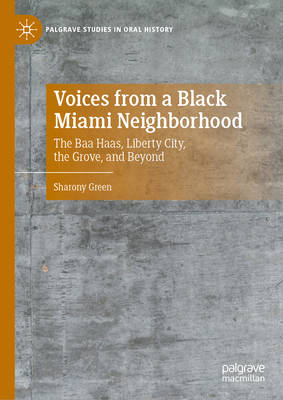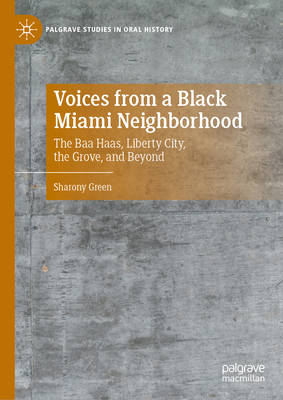
Je cadeautjes zeker op tijd in huis hebben voor de feestdagen? Kom langs in onze winkels en vind het perfecte geschenk!
- Afhalen na 1 uur in een winkel met voorraad
- Gratis thuislevering in België vanaf € 30
- Ruim aanbod met 7 miljoen producten
Je cadeautjes zeker op tijd in huis hebben voor de feestdagen? Kom langs in onze winkels en vind het perfecte geschenk!
- Afhalen na 1 uur in een winkel met voorraad
- Gratis thuislevering in België vanaf € 30
- Ruim aanbod met 7 miljoen producten
Zoeken
Voices from a Black Miami Neighborhood
The Baa Haas, Liberty City, the Grove, and Beyond
Sharony Green
€ 42,45
+ 84 punten
Omschrijving
This Palgrave Pivot is a personal and universal history of gain and loss. Via memoir and oral histories, Sharony Green, a native of Miami with ancestral roots in the American South and the Bahamas, sheds light on ups and down of African American residents before and after the Second World War. The author uses the 'Baa Haas, ' an outlying community in Miami-Dade County, a region that is also a gateway to Caribbean and Latin America, as a starting place to think through such things. As early as the New Deal era, white powerbrokers desired to relocate people of African descent from the lucrative waterfronts to a desolate and sandy area about twenty miles northwest of Miami's downtown. This community was later nicknamed the 'Baa Haas, ' presumably because its nearby prehistoric beach resembled California's Bajas beaches. Whether spelled Baa Haas, Bajas or Bahas, the tiny neighborhood, whose biggest landmark nowadays is Hard Rock Stadium, is noteworthy. It was not until whites themselves settled there first, beginning in the fifties with the help of the 1944 GI bill, that people of African descent, aided by the Fair Housing Act of 1968, at last moved there. Some arrived from older Miami communities like Liberty City, Overtown and Coconut Grove or even elsewhere in the States. Essentially, two federal initiatives collided with positive gains for the oppressed. As people increasingly find themselves displaced owing to gentrification, this book permits an opportunity for readers to see what had been possible for prospective black homeowners.
Specificaties
Betrokkenen
- Auteur(s):
- Uitgeverij:
Inhoud
- Aantal bladzijden:
- 151
- Taal:
- Engels
- Reeks:
Eigenschappen
- Productcode (EAN):
- 9783032018250
- Verschijningsdatum:
- 11/10/2025
- Uitvoering:
- Hardcover
- Formaat:
- Genaaid
- Afmetingen:
- 160 mm x 210 mm
- Gewicht:
- 344 g

Alleen bij Standaard Boekhandel
+ 84 punten op je klantenkaart van Standaard Boekhandel
Beoordelingen
We publiceren alleen reviews die voldoen aan de voorwaarden voor reviews. Bekijk onze voorwaarden voor reviews.









